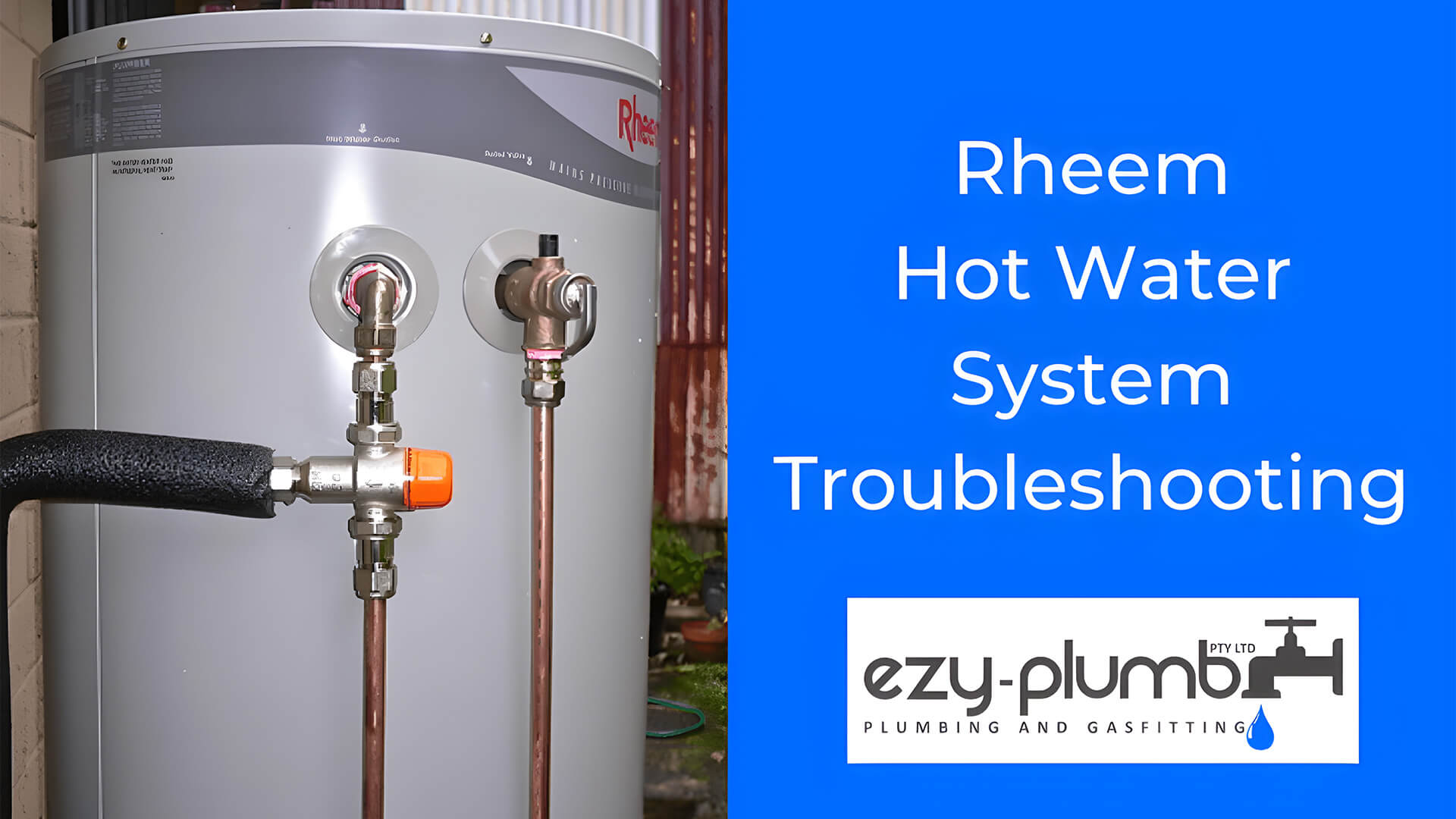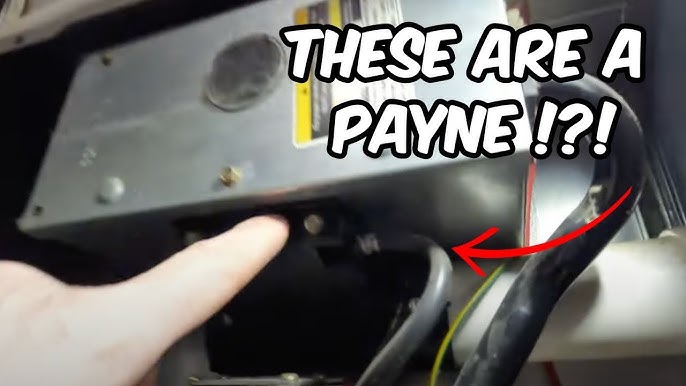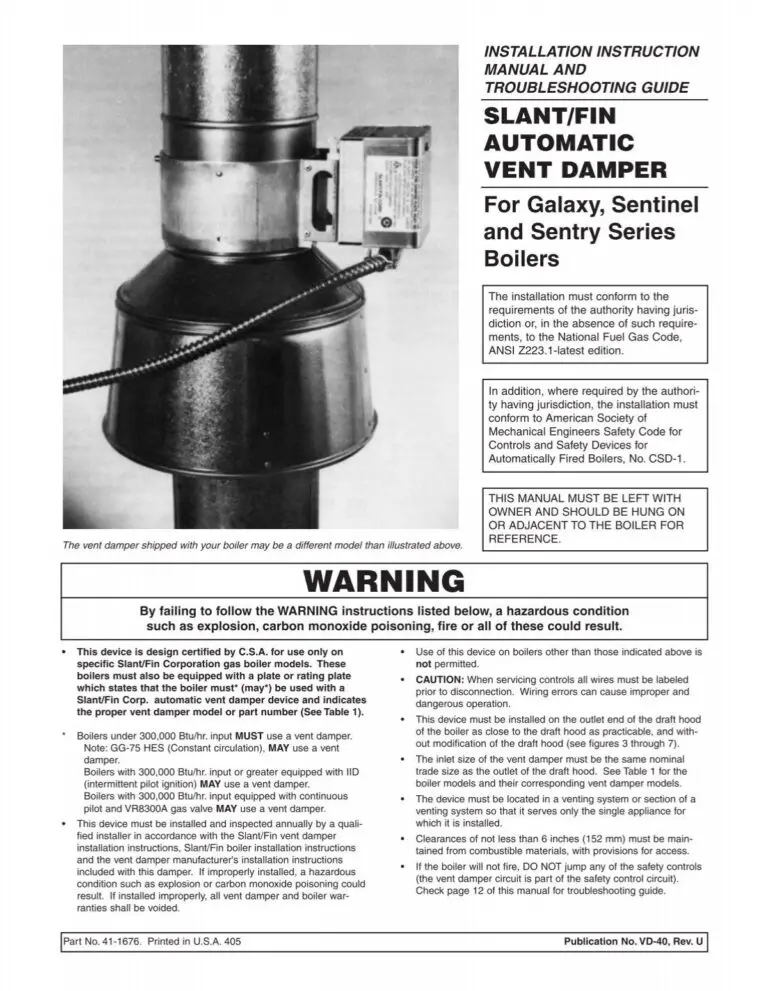Rheem Hot Water Heater Troubleshooting: Quick Fix Guide
Is your Rheem hot water heater giving you trouble? Few things are more frustrating than running out of hot water when you need it most.
The good news is, you don’t have to be a plumbing expert to figure out what’s wrong. With a little guidance, you can identify common issues and even fix some of them yourself. We’ll walk you through simple troubleshooting steps to get your Rheem water heater back in action.
Ready to save time, money, and stress? Let’s dive in and solve the problem together!
Common Issues With Rheem Water Heaters
Rheem water heaters are known for their reliability, but like any appliance, they can run into issues over time. Whether it’s a lack of hot water or strange noises coming from the unit, these problems can disrupt your daily routine. Understanding common Rheem water heater problems can help you troubleshoot effectively and even prevent costly repairs.
No Hot Water
Few things are more frustrating than turning on the shower only to feel cold water. If your Rheem water heater isn’t producing hot water, it could be due to a faulty heating element or thermostat. Start by checking the circuit breaker—sometimes it trips without warning, cutting power to the heater.
If the breaker is fine, test the thermostat settings. Ensure the temperature is set between 120°F and 140°F. If you’re still not getting hot water, it might be time to replace the heating element, which is a common wear-and-tear issue.
Inconsistent Water Temperature
Does your water suddenly shift from hot to cold mid-shower? This issue is usually tied to sediment buildup in the tank. Over time, minerals in the water settle at the bottom of the tank, reducing efficiency and causing temperature fluctuations.
Flushing the tank can often solve this problem. It’s a simple process: turn off the water heater, drain the tank, and rinse out the sediment. Regular maintenance like this can extend the lifespan of your water heater.
Water Leaks
Spotting water pooling around your heater is a clear sign of a leak. Leaks can come from loose connections, damaged pipes, or even a corroded tank. Inspect the pressure relief valve and the inlet/outlet connections for any visible issues.
If the leak is coming from the tank itself, it’s likely due to rust or wear. Unfortunately, a leaking tank often means you’ll need a replacement. Acting quickly can prevent water damage to your home.
Unusual Noises
Hearing popping or rumbling noises from your Rheem water heater? These sounds often indicate sediment buildup. When the heating element warms the water, trapped sediment causes the noise.
Flushing the tank can quiet these sounds and improve efficiency. However, if the noise persists, inspect the heating element for damage. Regularly draining the tank can help avoid this issue in the future.
Have you encountered any of these problems with your Rheem water heater? Taking a few minutes to troubleshoot might save you a call to a technician. Plus, it’s always satisfying to fix something yourself!
Checking Power And Gas Supply
If your Rheem hot water heater isn’t working properly, the first step is to check the power and gas supply. Sometimes the issue is as simple as a disconnected wire or low gas pressure. By ensuring these essentials are functioning, you can avoid unnecessary repair costs.
Inspecting Electrical Connections
Start by checking if the water heater is receiving power. Look at the circuit breaker and confirm it hasn’t tripped. If it has, reset it and test the heater.
Next, inspect the wires connected to the heater. Are they tightly secured and free of damage? Damaged or loose wires can disrupt power flow. Replace any worn-out wires immediately.
A simple tip: Use a voltage tester to ensure electricity is reaching the heater. This small tool can save you hours of frustration.
Verifying Gas Flow
Gas-powered Rheem heaters rely on steady gas supply to operate. Check the gas valve to make sure it’s open. Sometimes, valves are accidentally closed during cleaning or maintenance.
If the valve is open, test the gas pressure. Low pressure can prevent the burner from heating water effectively. Contact your gas provider if the pressure is insufficient.
Resetting The System
Rheem heaters often have a reset button that solves minor issues. Locate the button, usually near the thermostat or control panel. Press it firmly and wait for the system to reboot.
If resetting doesn’t work, try shutting down the heater completely for a few minutes. Restarting the system can clear temporary glitches.
Have you ever resolved a heater issue by simply checking power or gas supply? Share your experience in the comments below—it might just help someone else!
Thermostat And Temperature Settings
The thermostat is a key component of your Rheem hot water heater. It controls the water temperature and ensures it stays consistent. Issues with the thermostat can affect water heating and energy efficiency. Understanding how to adjust, test, and replace it can save you time and money.
Adjusting Temperature Controls
Start by locating the thermostat panel on your Rheem water heater. Turn off the power before adjusting any settings for safety. Use a screwdriver to remove the access panel and insulation. Adjust the temperature dial to your desired setting, typically between 120°F and 140°F. Replace the insulation and panel securely. Restore power and test the water temperature after a few hours.
Testing The Thermostat
To test the thermostat, turn off the power to the water heater. Remove the access panel and insulation to expose the thermostat. Use a multimeter to check for continuity. Place the probes on the thermostat terminals. A reading indicates the thermostat is working. No reading means it may need replacement.
Replacing Faulty Thermostats
If the thermostat is faulty, turn off the power supply. Drain the water heater to prevent leaks during replacement. Remove the access panel and disconnect the wires from the thermostat. Unscrew and remove the old thermostat. Install the new one by securing it in place and reconnecting the wires. Replace the insulation and access panel. Turn on the power and test the heater for proper operation.

Credit: the5starplumbing.com
Pilot Light Problems
Experiencing pilot light problems with your Rheem hot water heater can be frustrating. The pilot light is essential for igniting the burner and heating water. A malfunctioning pilot light can leave you without hot water. Understanding the issue is crucial to restoring your heater’s functionality. Below, we explore common pilot light problems and practical troubleshooting steps.
Relighting The Pilot Light
If the pilot light is out, it needs to be reignited. Start by turning off the gas supply for safety. Wait five minutes to let any residual gas disperse. Locate the pilot light assembly and the gas control knob. Turn the knob to the “Pilot” position and press it down. Use a long lighter or igniter to light the pilot flame. Keep holding the knob for 30-60 seconds to ensure the flame stays lit. Release the knob and switch it to the “On” position. If the flame goes out again, further inspection is required.
Inspecting The Ignition System
A faulty ignition system can prevent the pilot light from lighting. Check the igniter for dirt or damage. Clean it gently with a soft brush if dirty. Ensure the thermocouple is securely connected to the gas valve. A loose or damaged thermocouple can cut off the gas supply. Inspect the gas supply line for blockages or leaks. If you suspect a gas leak, stop troubleshooting and contact a professional immediately.
Addressing Persistent Pilot Light Issues
If the pilot light issue persists, deeper problems may exist. A faulty thermocouple may need replacement. Over time, thermocouples wear out and fail to detect the pilot flame. The gas control valve could also be malfunctioning, interrupting gas flow. Sediment build-up in the burner area can block the pilot flame. Regular maintenance can prevent such issues. If you’re unable to fix the problem, consult a licensed technician for assistance.
Addressing Sediment Buildup
Addressing sediment buildup in your Rheem hot water heater is essential. Sediment accumulation can reduce efficiency and shorten the lifespan of your heater. Regular maintenance can help improve performance and prevent costly repairs.
Flushing The Tank
Flushing the tank removes sediment that settles at the bottom. Turn off the heater and close the cold water supply. Attach a garden hose to the drain valve and direct it to a safe drainage area. Open the valve and let the water flow until clear. Refill the tank and restart the heater.
Signs Of Excess Sediment
Water takes longer to heat or stays lukewarm. You may hear rumbling noises from the tank. These are signs of sediment buildup. Reduced water pressure can also indicate sediment clogging the pipes.
Preventing Future Buildup
Install a water softener to reduce mineral deposits. Use a sediment filter to trap particles before they enter the heater. Flush your tank every six months to keep it clean. Regular inspections help identify early signs of buildup.
Dealing With Water Pressure Issues
Dealing with water pressure issues in your Rheem hot water heater can be frustrating, but the good news is that most problems can be fixed with a little troubleshooting. Whether your water pressure feels like a trickle or a firehose, the solution is often simpler than you think. Let’s break it down step-by-step so you can restore your water heater’s performance and enjoy a steady flow of hot water again.
Testing Water Pressure
Start by checking the water pressure at your faucets. Use a water pressure gauge, which you can pick up at a hardware store for a few dollars. Attach it to an outdoor faucet or the one closest to your water heater.
Most homes have a water pressure range of 40-60 psi. If your reading falls below this, low pressure could be the issue. If it’s too high (above 80 psi), that could also cause problems, like wear and tear on your system.
Not sure if the pressure gauge is accurate? Compare the flow from different faucets in your home. If only the hot water has pressure issues, the problem is likely within the heater itself.
Adjusting Pressure Regulators
If your water pressure is too high or too low, the pressure regulator might need adjustment. Locate the regulator, which is usually found near your water main or attached to your water heater’s inlet valve. It’s a dome-shaped device with a screw or bolt on top.
Turn the screw clockwise to increase the pressure and counterclockwise to decrease it. Make small adjustments, checking the pressure gauge after each turn. Don’t overdo it—extreme adjustments can damage your plumbing system.
Remember to keep the pressure within the 40-60 psi sweet spot. If adjusting doesn’t work, the regulator might be faulty and require replacement.
Identifying Pressure-related Damage
Low or high water pressure can cause damage to your Rheem hot water heater over time. Look for signs like dripping pipes, leaks near the heater, or unusual noises when water flows. These could indicate stress on the system.
Examine the pressure relief valve on your heater, as it’s designed to release water when pressure gets too high. If it’s constantly dripping, it may need replacing. Similarly, sediment buildup from fluctuating pressure might clog pipes or damage internal components.
Regular maintenance, like flushing your tank annually, can prevent pressure-related damage. If repairs seem overwhelming, it’s always a good idea to call a professional plumber for expert help.
Water pressure issues don’t have to be a headache. By testing the pressure, tweaking the regulator, and inspecting for damage, you’ll keep your Rheem hot water heater running smoothly for years to come. What’s stopping you from grabbing that pressure gauge and taking the first step today?
Inspecting Heating Elements
Inspecting the heating elements in your Rheem hot water heater can save you time, frustration, and money. If your water isn’t heating properly, the heating elements are often the culprit. Let’s break down how to test, identify, and replace these components efficiently.
Testing Heating Elements
Before replacing anything, you need to confirm if the heating elements are faulty. Start by shutting off power to the water heater. Safety comes first.
Grab a multimeter to measure the resistance in the heating elements. Set the multimeter to the ohms setting and touch the probes to the terminals of the element. A healthy element typically shows resistance between 10 to 30 ohms.
If your readings are outside this range or show zero resistance, it’s time to replace the element. Did you know a multimeter costs less than a repair technician visit? It’s worth the investment.
Replacing Damaged Elements
Once you confirm a heating element is damaged, replacing it is straightforward. Drain the tank completely to avoid water spills. Use a wrench to remove the old element carefully.
Install the new heating element by screwing it into place snugly. Make sure the gasket is positioned correctly to prevent leaks. Tighten it securely but avoid over-tightening, as this can damage the tank.
Restore power to the unit and test the water temperature after a few hours. Replacing elements yourself can save you hundreds of dollars in service fees. Would you rather spend a weekend learning or pay a premium for repairs?
Signs Of Element Wear
How can you tell your heating elements are wearing out before they completely fail? Look out for signs like inconsistent water temperatures or reduced heating efficiency. If your water runs cold faster than usual, that’s a red flag.
Physical inspection can also reveal wear. Remove the element and check for corrosion or mineral buildup. Hard water areas are notorious for damaging heating elements prematurely.
Regular maintenance, like descaling your tank, can extend the life of your elements. Have you checked your water heater lately? A little care today can prevent costly repairs tomorrow.

Credit: cuisinesrenoves.com
When To Call A Professional
Rheem hot water heaters are reliable, but issues can arise over time. Some problems require expert attention to ensure safe and effective repairs. Knowing when to call a professional can save you time and avoid costly mistakes. Below are key situations where expert help is needed.
Major System Failures
If your hot water heater stops working entirely, it may signal a major issue. Problems such as complete loss of hot water or frequent system shutdowns should not be ignored. These failures often involve complex components like the thermostat or heating elements.
Safety Concerns
Warranty And Service Options
Maintenance Tips For Longevity
Proper maintenance of your Rheem hot water heater ensures it lasts longer. Regular care reduces breakdowns and maintains efficiency. Simple tasks can prevent costly repairs and extend its life. Follow these practical tips to keep your unit in excellent condition.
Regular Inspections
Inspect your water heater monthly for any visible issues. Look for leaks, rust, or unusual noises. Check the pressure relief valve to ensure it’s functioning properly. Monitor the tank and surrounding area for signs of moisture or corrosion. Address small problems early to avoid expensive repairs.
Cleaning And Servicing
Flush the tank annually to remove sediment buildup. Sediment can reduce efficiency and damage the tank. Turn off the power and drain the tank completely. Clean the anode rod to prevent rust and extend the tank’s life. Keep the exterior dust-free to ensure proper ventilation.
Scheduling Professional Tune-ups
Hire a professional to inspect your unit yearly. A technician can identify hidden issues and perform necessary adjustments. They can check the thermostat, wiring, and safety valves. Regular tune-ups improve performance and ensure safety. Professional care adds years to your water heater’s life.

Credit: www.youtube.com
Conclusion
Troubleshooting a Rheem hot water heater doesn’t have to feel overwhelming. Start by identifying the issue, then follow simple steps to fix it. Regular maintenance can prevent many common problems. Always ensure safety and shut off power before repairs. For complex issues, contacting a professional is the best option.
A well-functioning water heater ensures comfort and reliability in your home. By addressing problems early, you can save time and money. Keep this guide handy for quick reference. Proper care keeps your Rheem water heater running smoothly for years. Reliable hot water is just a few steps away!






